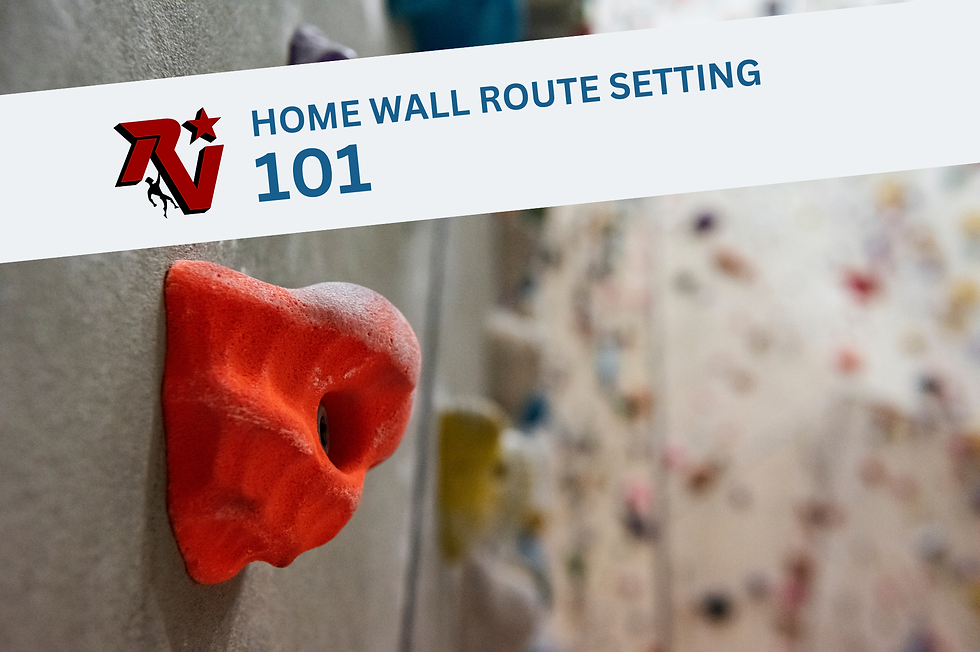Cross Training for Climbing: Making the Most of Unconventional Rock Climbing Workouts
- Dovi Hirsch
- Apr 18, 2022
- 4 min read
by Christopher Schafenacker

If you follow this blog, you know that the best training for climbing is climbing itself. Ours is a skills-based sport, which means that the only way to improve is to actually climb. This is especially true for beginner and intermediate climbers who need to first develop efficient technique before thinking about targeted climbing training.
Advanced climbers who have hit a plateau may benefit from cross training for climbing, but not for the reasons most assume. Stagnation does not arrive because you haven’t done enough weighted pull-ups or deadlifts, but because something specific is lacking in your climbing. Maybe it’s your footwork, maybe it’s your ability to hold tension through your core, or maybe it’s your footwork because of your lacking ability to hold tension through your core.
Identifying which specific aspect of your climbing could stand to improve is a matter of individual (or coach-assisted) observation and analysis. There are no universal rock climbing workouts. Once you know that core tension is your limiting factor, you also need to understand that you won’t improve by doing a punishing block of core training every day. You’ll only improve once you have integrated gains made from core training into your climbing.
Cross training for climbing won’t make you a stronger climber, it will make you a stronger person, better able to endure the specific climbing training required for improvement.
Put otherwise, you will only overcome deficiencies in your climbing through climbing itself. The ability to complete new or more intense rock climbing workouts, however, often requires increased general strength and fitness. Cross training gives you this base.
What Does Cross Training for Climbing Look Like?
There is no magic bullet cross training exercise every climber needs to be doing. The complementary exercises that will help one experienced climber punch through to the next level will not be the same for another. Nonetheless, common shortcomings exist.
In the present era of gym-dominated climbing, deficiencies in technique and head game rather than strength are often what limit a climber’s outdoor sending ability. This said, when the limitation is physical, it is often related to finger strength, core strength, or power. If one of these is your issue—and only a thorough self- or coach assisted-analysis can tell—this is what you can do:
1. Train Finger Strength
Hangboarding isn’t often thought of as cross training for climbing, and yet anything that doesn’t involve actually scaling rock (or resin) walls meets the definition.
There is no one way to hangboard. Different protocols will address different needs. However, if you’re new to the activity, the “minimum edge” protocol described here by Eric Hörst, and derived from research by Dr. Eva López is a good place to start.
2. Enhance Core Tension
There are as many core exercises as there are muscles that make up your core, and yet most climbers make the mistake of only doing one or two of them. Leg raises, anyone? Ab rollers? If you’re among the majority that always repeats a favorite couple of core exercises at the end of a session, your inability to hold tension on hard routes is probably a result of never having trained half the muscles needed to do so. Fix this by periodically cycling new core exercises into your training that each focus on different aspects of this complex musculature.
3. Boost Your Power
Power is the measure of how quickly you can exert maximum strength. Faster muscle contractions equal more power. Many crushers fail on hard routes or boulders because, while they may be strong, they aren’t fast enough to put that strength to use in the time needed to stick (or not stick) a move.
Despite common misconception, campus boarding is not the answer. Doing so will train plyometric strength, but won’t maximize power gains. Instead, you should train power by performing explosive lifts, explosive pull-ups, and even explosive hangboarding protocols.
Doing the above may help your climbing, but only if you don’t lose sight of the fact that climbing better (not, say, lifting more) is your goal. Tension on the wall won’t be improved by gaining a stronger core; it will be improved by gaining a stronger core and then learning to use this strength while you climb. This can only happen if you remember that training for climbing needs to be predominantly composed of climbing, itself.
Featured Climbing Training Gear
*NEW* The Rocketeer Wall: our free-standing adjustable solution for those who can’t mount a hangboard anywhere in their home or apartment—or who are limited on space. The Rocketeer gives climbers the additional option to set specific climbing holds. Recreate the crux holds of your proj and get ready to send, bruh.
The Rocket Wall: Available in 6’ and 8’ widths, it’s been tough for us to keep up with the demand for this innovative home climbing wall solution. Slightly overhanging, the Rocket Wall is big enough to set routes on, or to build a systems board.
The Rock-Stah: Our handcrafted version of a traditional hangboard, with curving crimp rails to help alleviate unnecessary strain on your pulleys. Because ain’t no one got time for a finger injury…










Comments